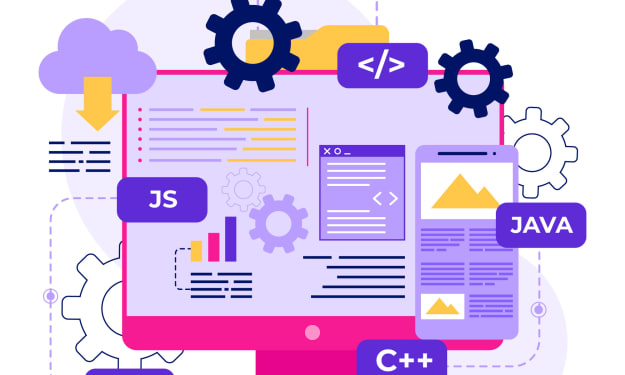Elevating Tech Support: The Art and Science of Continuous Improvement
Navigating the Feedback Loop for Seamless User Experiences in the Digital Era

In the ever-evolving landscape of technology, the role of tech support has become paramount. As users rely heavily on various devices and software, the demand for efficient and effective support services has surged. This brings us to the concept of continuous improvement within tech support—an essential strategy that ensures services not only meet but exceed user expectations. In this blog, we'll delve into the intricacies of continuous improvement, focusing on the pivotal role of feedback loops in enhancing tech support services.
Understanding Continuous Improvement in Tech Support:
Continuous improvement is a philosophy that emphasizes ongoing efforts to enhance processes, products, or services. In the realm of tech support, this means a commitment to constant evolution and adaptation to better serve users. It's not just about fixing problems; it's about learning from each interaction, identifying areas for improvement, and implementing changes to prevent similar issues in the future.
The Tech Support Feedback Loop:
At the heart of continuous improvement in tech support lies the feedback loop—a mechanism that systematically collects, analyzes, and acts upon user feedback. This loop involves several stages, each crucial in its own right:
1. Collection of Feedback:
The first step in the feedback loop is gathering input from users. This can take various forms, including surveys, direct communication channels, and automated feedback systems. Understanding the user's experience, concerns, and suggestions provides valuable insights that serve as the foundation for improvement.
2. Analysis of Feedback:
Once feedback is collected, it needs to be thoroughly analyzed. Tech support teams sift through the data to identify recurring issues, common pain points, and areas where the service excels. This analysis is crucial in making informed decisions about where improvements are most needed.
3. Implementation of Changes:
Armed with insights from user feedback, tech support teams can now implement changes to address identified issues and enhance overall service quality. This stage requires a collaborative effort, involving not only tech support personnel but also developers, product managers, and other relevant stakeholders.
4. Monitoring and Evaluation:
Continuous improvement is an ongoing process, and the effectiveness of implemented changes needs to be monitored. Regular evaluations help teams understand the impact of their adjustments and identify any unintended consequences. This iterative approach ensures that improvements are sustained over time.
The Role of User Feedback:
User feedback is the lifeblood of the tech support feedback loop. It provides a direct line of communication between users and support teams, offering a real-time glimpse into the user experience. Here are some key aspects of how user feedback drives continuous improvement:
1. Identification of Pain Points:
Users are quick to highlight areas where the tech support experience falls short. Whether it's a confusing interface, slow response times, or unresolved issues, user feedback sheds light on pain points that may have been overlooked.
2. Prioritization of Improvements:
Not all feedback is equal. The feedback loop helps prioritize improvements based on the severity and frequency of reported issues. This ensures that the most critical issues are addressed promptly, enhancing overall user satisfaction.
3. Validation of Success:
Positive feedback is just as important as negative feedback. It validates successful aspects of the tech support service, helping teams understand what they are doing well. Recognition of success encourages teams and reinforces positive behaviors.
Evolving with Industry Best Practices:
Continuous improvement isn't just about fixing current issues; it's about staying ahead of the curve. Tech support teams actively engage with industry best practices to incorporate the latest methodologies, tools, and technologies into their service delivery. By staying informed and adaptable, they ensure that their services remain cutting-edge and aligned with evolving user expectations.
The Commitment to Evolution:
The commitment to continuous improvement is not a one-time effort; it's an ongoing journey. Tech support teams must embrace a mindset of perpetual learning and adaptation. This commitment extends beyond the immediate resolution of user issues to the proactive identification and prevention of potential problems.
Case Study: The Tech Company that Transformed Support Services:
To illustrate the impact of continuous improvement in tech support, let's explore a hypothetical case study of a tech company that transformed its support services through a robust feedback loop.
Background:
Company X, a leading tech firm, faced a surge in user complaints about lengthy response times and unclear troubleshooting guides. Recognizing the need for improvement, they implemented a comprehensive feedback loop.
Implementation of Feedback Loop:
Collection of Feedback:
Implemented an automated feedback system at the end of each support interaction.
Conducted regular surveys to gather detailed insights from users.
Analysis of Feedback:
Discovered a common theme of frustration due to delayed responses and confusing troubleshooting instructions.
Identified specific areas in the support process that contributed to these issues.
Implementation of Changes:
Introduced a tiered support system to prioritize and address urgent issues more efficiently.
Revamped troubleshooting guides with clearer instructions and visual aids.
Monitoring and Evaluation:
Tracked response times and resolution rates over the next few months.
Observed a significant reduction in user complaints and an increase in positive feedback.
Results:
Company X's commitment to continuous improvement resulted in a tangible transformation of its support services. The streamlined feedback loop not only resolved existing issues but also positioned the company as a customer-centric industry leader.
Conclusion:
Continuous improvement in tech support is not a luxury but a necessity in today's dynamic technological landscape. The feedback loop, driven by user input, forms the backbone of this philosophy. As tech support teams embrace this approach, they ensure that their services evolve in tandem with user needs and industry best practices. In the end, it's not just about fixing problems; it's about fostering a culture of continuous learning and adaptation to deliver exceptional support services. #TechSupportImprovement is not just a hashtag; it's a commitment to excellence.
About the Creator
Arrowsoft
The Technology Partner to All Your Business Needs
Enjoyed the story? Support the Creator.
Subscribe for free to receive all their stories in your feed. You could also pledge your support or give them a one-off tip, letting them know you appreciate their work.






Comments
There are no comments for this story
Be the first to respond and start the conversation.